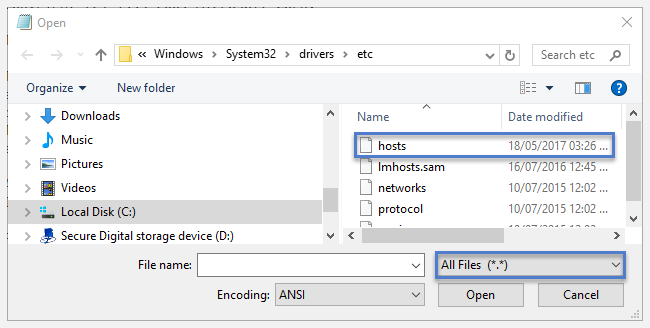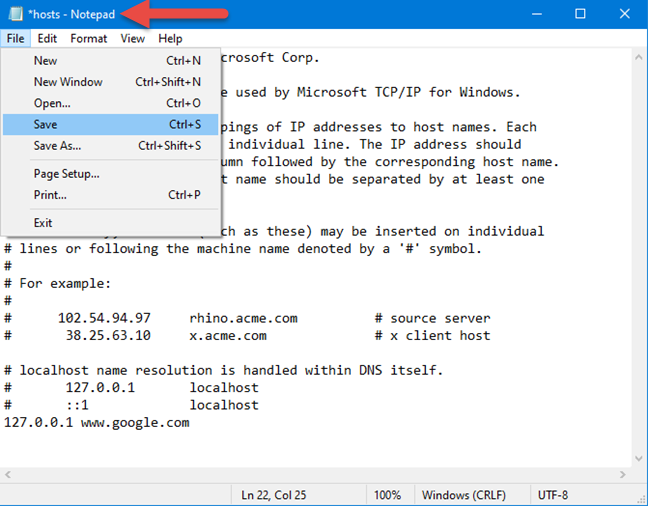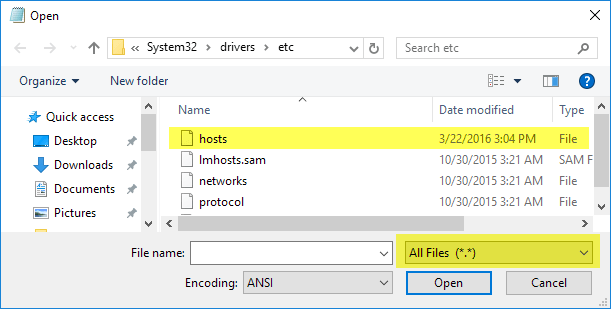

HOSTS FILE MAC
HOSTS FILE HOW TO
Learn how to find and edit the Mac hosts file four simple steps. You’ve now successfully edited your Mac hosts file! This step will ensure that your changes go live within your browser.
HOSTS FILE UPDATE
To update your browser DNS records, you can enter the following command into the Terminal application: sudo killall -HUP mDNSResponder As such, this process will enable your browser to reflect the updated IP address from the edited hosts file. Therefore, it’s not a bad idea to flush your cache when you finish editing the file.įlushing your cache removes saved IP records. If you’ve edited your Mac hosts file, but your changes aren’t going live, the problem may be with your DNS cache. When you’re done, you can press Ctrl + O to overwrite the existing file, followed by the Enter/Return key. In addition to adding IP addresses, you can also block them to prevent your device from pointing a site their way. You can find a key menu list at the bottom of the editor window. For example, multiple entries should be in the following format: SERVER_IP_ADDRESS SERVER_IP_ADDRESS If you want to cancel the changes you’re making, you can use your keyboard to delete the line(s) you’ve added. Tired of subpar level 1 WordPress hosting support without the answers? Try our world-class support team! Check out our plansĪlso, keep in mind that every entry you add should have its own line. You will want to replace this, as well as “,” with whatever you’re trying to add. Then, on a new line, you can add the IP address of the domain you want to add:Īs you can see from the above screenshot, we added “123.123.123.123” as our new domain. You can use your arrow keys to navigate to the bottom of the file. However, let’s imagine that you’re trying to add a new domain. The following steps will depend on what exactly you’re planning to do within the hosts file. At this point, your screen should look like this.
HOSTS FILE PASSWORD
Step 3: Begin Editing Your Mac Hosts FileĪfter you type in your password and hit Enter/Return, you’ll be brought to the Nano text editor. Note that when you enter your password, it won’t populate on the screen for security purposes. Type in your password and hit the Enter/Return key once again.

Join 20,000+ others who get our weekly newsletter with insider WordPress tips!

Want to know how we increased our traffic over 1000%? You’ll then be asked to type in your administrator password: You can then enter the following command into the Terminal application. Start by installing the newest version of the Nano program. We’ll use the Nano text editor for this tutorial because it’s versatile and user-friendly. Once the Terminal application opens, you’ll need to use a text editor in order to access the hosts file. Then type “terminal” in the search field, and select the Terminal icon when it appears.
Next, click on the Terminal application.Īlternatively, you can also hit F4 to open the launcher. You can find the Terminal application by navigating to Finder > Go > Utilities.įind the Terminal application on your Macĭoing this will bring up various tools that you can use to control your Mac device. If you don’t have these privileges, you can log in with an administrator account and enable the root user account. Also, note that you’ll need root user privileges to do this. To get started, you’ll first need to access and open your Terminal application. Below is how you can locate and edit this file in four easy steps. Now that you understand a little more about the Mac hosts file, it’s time to get to work. 👩💻 Click to Tweet How To Find and Edit Your Mac Hosts File (In 4 Steps) and to do that, you need to know how to locate and access it. Your Mac hosts file is crucial when you want to override your DNS and map to a new IP address. See how Kinsta stacks up against the competition.


 0 kommentar(er)
0 kommentar(er)
